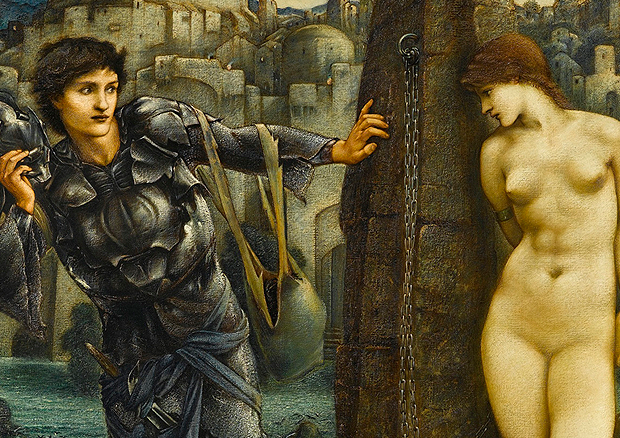Edward Burne-Jones. «The Earthly Paradise»
In the spring of 2010, the Kunstmuseum Bern will be totally under the ascendancy of the London painter and draftsman Edward Burne-Jones (1833-1898). This leading protagonist of late Victorian art – a hitherto largely neglected epoch on the European continent – will be presented in Switzerland for the first time in a large-scale monographic exhibition. Organized in collaboration with the Staatsgalerie Stuttgart and its collection of major Pre-Raphaelite works, the show will bring together around one hundred paintings and drawings, furniture and glass windows of this fascinating master of English Symbolism.
Ferdinand Hodler’s symbolist vision provides a link for many visitors because the Swiss artist modelled a number of his paintings after the work of Burne-Jones. The title of the exhibition refers to one of the most important literary sources of inspiration for Burne-Jones in his narrative cycles: William Morris’ very successful book The Earthly Paradise (1868). At the same time, the title characterizes the painter’s primary conceptual concern, as his entire oeuvre can be viewed as an alternative, idealistic concept to the prosaic and mundane impact of the industrial revolution in late Victorian times. Morris, who was Burne-Jones’ close friend, companion, and business partner since they studied together at Oxford, relates in The Earthly Paradise old Nordic, medieval, and classical Greek sagas and legends anew using archaic language.
The fact that he intermingles classical topics with medieval narrative modes certainly converges closely with Burne-Jones’ personal notion of an ideal age, that is, of an earthly paradise. The view of the fascinating world of antiquity with its partly drastic eroticism as well as its tragic and brutal side is softened by perceiving it through the veil of a solemn age imbued with Christian ideals. In his various painting series Burne-Jones, the former theology student, continually depicted people on a kind of pilgrimage, whereby already the single stations thereof mediate the promise of the journey’s end.
Further pivotal image narratives will be shown in the exhibition besides the Perseus series: For example, the large-format series of Cupid and Psyche, which he executed together with Walter Crane, or the Pygmalion series in four paintings. Using medieval sources he created the Christian series of St. George and the Dragon, the fairytale-like and intensely colored Sleeping Beauty paintings, and the heartrending souls on the banks of the Styx.


